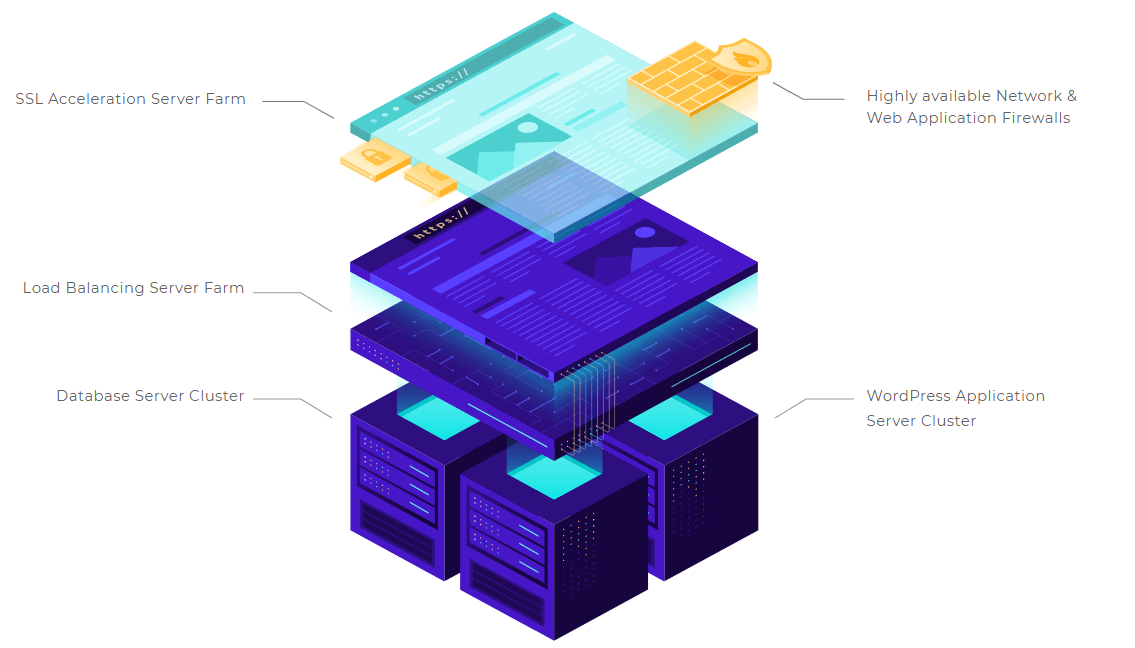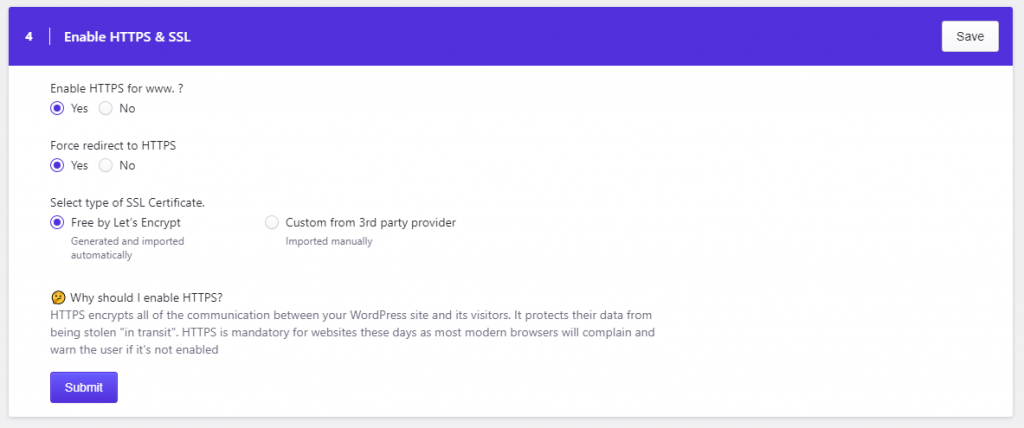
Protecting Your WordPress Site from Malware
Powering over 40% of the web, WordPress is a prime target for hackers. Malware remains one of the most prevalent threats, capable of more than just harming your website. It can harm your business by causing lost traffic, financial setbacks, and reputational damage.
The good news? You can protect your WordPress site against malware effectively. This guide will show you how to secure your site, prevent future infections, and respond effectively if an attack occurs.
What Is Malware and How Does It Work?
Malicious software, or malware, refers to any code or program designed to harm, exploit, or gain unauthorized access to a system.
In WordPress, it can take many forms: backdoors that bypass security, trojans disguised as plugins, SEO spam that damages search rankings, and phishing scripts used to steal sensitive user data.
Malware threats often infiltrate WordPress sites by targeting common vulnerabilities, including:
- Outdated plugins or themes that attackers can exploit when left unmaintained.
- Weak admin credentials such as simple or reused passwords, which enable brute-force attacks.
- Poor hosting security and improperly configured servers that increase exposure to threats.
- Unreliable third-party integrations from untrusted sources, often acting as gateways for malware.
Understand the Risk: The Impact of Malware on WordPress Sites
Malware poses serious consequences for WordPress websites and businesses.
One major risk is data theft, where sensitive customer or business information is stolen and potentially exploited.
Beyond this, malware can have a devastating impact on your site’s search engine rankings. Google will often blacklist infected sites, effectively killing organic traffic and destroying SEO efforts.
Financial losses are another critical concern, as downtime caused by malware can result in missed sales opportunities. Recovering from a hack often involves significant repair costs.
Consequently, the damage extends to your brand’s reputation. Visitors encountering a hacked or flagged website may lose trust, hindering credibility and customer loyalty.
Understanding the risks malware brings, it’s time to focus on protecting your WordPress site.
First Steps for Defence Against Malware
Securing your WordPress site begins with fundamental measures that safeguard it against malware. Here’s a step-by-step guide to start building your defense:
1. Update WordPress: Themes, Plugins, and Core Files
Outdated software is a hacker’s favorite target. Update your WordPress core, themes, and plugins to ensure your site benefits from the latest security patches. Pending updates leave your site exposed to known vulnerabilities, increasing the risk of compromise.
2. Secure Your Login Page with Best Practices
The login page is a frequent target for brute-force attacks. You can enhance its security with a few simple adjustments:
- Use strong, unique passwords and avoid reusing them. A simple yet often overlooked way to boost security. With password managers, there’s no need to rely on weak or predictable passwords just for the sake of remembering them.
- Change the default login URL from
wp-adminto something unique. - Limit login attempts to prevent automated brute-force hacking attempts.
- Enable two-factor authentication (2FA) for an additional layer of security, requiring a second verification step to access your site.
- Restrict admin access to essential users only to minimize vulnerabilities from multiple high-permission accounts.
3. Install a WordPress Malware Scanner
Malware scanner plugins like Jetpack Protect, Malcure Malware Scanner, MalCare, or Sucuri Security can help detect, monitor, and remove malicious code from your WordPress site.

These tools provide valuable features such as alerts for suspicious activity, harmful traffic blocking, and detailed logs. However, keep the following in mind:
- Firewall Limitations: These plugins often include WordPress-specific (application-level) firewalls that run in WordPress itself. These are not a substitute for robust server-level Web Application Firewalls.
- Performance Impact: Deep file and database scans can be resource-intensive, potentially slowing down your website.
- Reactive Focus: Most plugins detect malware after infection, rather than proactively preventing threats.
- Complex Setup: Configuring these plugins can be challenging for non-technical users.
- Limited Scope: Advanced threats, such as those exploiting server or network vulnerabilities, may bypass plugin-level security.
4. Create a Backup of Your Website
WordPress plugins make it easy to create and schedule full backups of your site. For extra security, store these backups offsite, either in the cloud or on a remote server. With a dependable backup ready, you’ll have a clean version of your site available for quick recovery if needed.
By taking these steps, you establish a solid foundation for malware protection. Combining them with ongoing maintenance significantly reduces risks and ensures a secure WordPress site.
Building Long-Term Protection for Your WordPress Site
Protecting your WordPress site requires more than basic security. Proactive measures to harden your site and eliminate vulnerabilities are key to sustained safety.
- Weak file permissions can expose your site to attacks. Set directories to
755, files to644, and sensitive files like wp-config.php to600. Regularly review these settings to maintain security. - XML-RPC enables remote WordPress access but is a common vulnerability for brute-force and DDoS attacks. If unnecessary, disable it by updating your .htaccess file to block XML-RPC entirely.
- SSL encryption secures data exchanges between your site and visitors, protecting sensitive information. It is essential for admin access, API communications, and fostering visitor trust.
Monitor Site Performance and Uptime
Ongoing monitoring is crucial to protect your WordPress site. Tools like UptimeRobot help ensure your site remains accessible, as downtime can indicate an attack or server problem. Google Search Console flags malware or indexing issues, labeling your site as dangerous and allowing you to address problems before they escalate.
Try our Award-Winning WordPress Hosting today!

Responding Quickly to Malware Incidents
Time is critical when malware strikes your WordPress site. Rapid action minimizes damage and accelerates recovery. Follow these steps to respond effectively:
- Isolate your site
Immediately set your site to maintenance mode to block public access. This contains the malware, protects sensitive data, and maintains your reputation while you resolve the issue. - Scan for Malware
Run a scan to locate infected files and vulnerabilities. Ensure the scanner is up-to-date to detect the latest threats. - Restore a Clean Backup
Replace compromised files with a pre-attack backup. Verify the backup’s integrity before restoring it to prevent reintroducing vulnerabilities. - Secure All Credentials
Change passwords for WordPress admin, database, and FTP accounts. This blocks unauthorized access and strengthens your site’s defenses. - Get Expert Help
If malware persists, contact your hosting provider. Managed hosting solutions such as Pressidium offer professional malware removal, vulnerability fixes, and complete site restoration to ensure a fast recovery.
By following these steps, you can restore your site quickly and reinforce its security against future attacks. For complete protection, pair these actions with server-side security measures provided by a trusted hosting provider.
How Hosting Providers May Protect Your WordPress Site From Malware
It is important to note that low-end inexpensive hosting may be detrimental to your site’s security. To keep costs low they often do not focus on security systems, best practices, and on hiring expert personnel.
On the other hand, Premium Hosting providers such as Pressidium are the exact opposite. They safeguard your site through a mix of foundational defenses and proactive strategies. Here’s how they ensure your WordPress site stays secure:
Building a Strong Foundation
Security begins with a solid foundation. Premium Hosting providers maintain their server infrastructure by applying regular updates, and security patches, and disabling unnecessary services. Hardened server environments with restricted administrative access significantly reduce the attack surface, making it harder for malware to exploit vulnerabilities.
Isolated Hosting Environments
Account isolation ensures that even in shared hosting environments, a compromised site cannot affect others on the same server. Premium Managed WordPress hosts enhance this further by isolating WordPress installations, and creating a secure and compartmentalized environment for each site.
Preventing and Detecting Threats
Advanced Firewalls form the first line of defense, blocking malicious traffic and unauthorized access attempts. Paired with Intrusion Detection Systems (IDS), these tools actively monitor network activity for suspicious behavior, such as SQL injections, cross-site scripting (XSS), and brute-force attacks. Together, they provide robust protection against common threats.
Real-Time Threat Monitoring
Continuous monitoring allows premium hosting providers to detect and address potential threats in real-time. This 24/7 vigilance identifies unusual traffic patterns, exploit attempts, or resource usage spikes, ensuring swift action before an issue escalates.
Malware Detection and Removal Services
Automated malware scanning tools check your site for vulnerabilities and malicious code regularly. Premium Fully Managed providers, such as Pressidium, integrate these tools into their hosting plans to detect and neutralize malware proactively, ensuring a safer online presence.
When suspicious activities occur, premium hosting providers send real-time alerts to site owners. Notifications about malware detection, failed logins, or DDoS attempts allow for rapid responses to mitigate risks.
In the event of a breach, premium hosting providers often offer professional malware cleanup services. They remove malicious code, restore site integrity, and guide you in securing vulnerabilities to prevent future attacks.
Recovery and Backup
Automated daily backups ensure minimal data loss during recovery. In case of a breach, premium hosting providers can restore your site quickly, reducing downtime and stress. Backups serve as an essential safety net, providing peace of mind in the worst-case scenario.
By selecting a premium hosting provider that prioritizes these security measures, you establish a robust defense against malware. Pair these server-side protections with proactive site management to keep your WordPress site secure, reliable, and resilient.
How Pressidium Helps Secure Your WordPress Site from Malware
At Pressidium, security is at the core of everything we do. Our Enterprise-grade platform is designed to protect your WordPress site from malware with a comprehensive, multi-layered approach. From advanced defenses to expert support, Pressidium shields your site from threats and ensures swift recovery if incidents occur.
Web Application Firewall (WAF)
Our server-level WAF operates at the application layer, inspecting and filtering every request to and from your site. It defends against threats like SQL injections, malicious bots, and cross-site scripting attacks.

With advanced brute-force protection, our platform blocks IP addresses at the firewall level after multiple failed login attempts, preventing unauthorized access and stopping attackers from testing credentials repeatedly. If something is detected as out-of-order, the malicious attempt is stopped here, protecting your website from any further penetration.
In the rare case of a breach, our team steps in to perform a full malware cleanup.
In case of disaster, we will fully restore your site using our daily automated backups which are stored offsite for disaster recovery, and provide a detailed post-mortem analysis.
This entire process happens transparently at the infrastructure level. No need for plugins or manual configurations on your part.
Data Encryption with Free SSL Certificates
We fully support the Let’s Encrypt initiative, enabling free SSL certificate integration for every site directly through your Pressidium Dashboard.

This ensures encrypted data exchanges, safeguarding sensitive information and building trust with your visitors.
Software and Security Updates
WordPress updates are carried out automatically after thorough testing, ensuring seamless integration without disrupting your operations. With Pressidium, you can be confident your site is always running the latest and safest version of WordPress.
Enhanced Security for Enterprise Plans
Enterprise clients benefit from advanced security features such as Geo-Blocking. This functionality allows you to block traffic by IP address or geographic region, providing protection against location-based threats. Whether you’re mitigating potentially malicious traffic from specific countries or restricting access for business reasons, Geo-Blocking offers targeted, effective defense. This is just an example of one of the many custom security features clients on Enterprise Plans enjoy – for a full overview see our Enterprise page.
At Pressidium, we go beyond hosting to become your trusted security partner. With robust malware protection, expert guidance, and proactive measures, we ensure your WordPress site remains secure, letting you focus on growing your business worry-free.
Ready for hassle-free WordPress security?
Explore our hosting plans or start a free trial and experience enterprise-grade hosting with Pressidium today.
Start Your 14 Day Free Trial
Try our award winning WordPress Hosting!



















